Sound: 









Value: 









(Read about our ratings)
Measurements can be found by clicking this link.
I guess the high-end audio companies got sick of Bose and Sony owning the market for noise-canceling Bluetooth headphones. We’ve seen DALI jump in with the IO-6 headphones at $499, Mark Levinson with the N⁰ 5909s at $999, and now Focal with the Bathys headphones at $799 (all prices USD)—substantial price boosts over the $350 or so that Bose and Sony tend to charge. I’ll come right out and say it’s highly unlikely that the high-end guys are going to beat Bose and Sony at noise canceling. But they might beat them on sound quality, although Bose and Sony are no slouches at that, either.
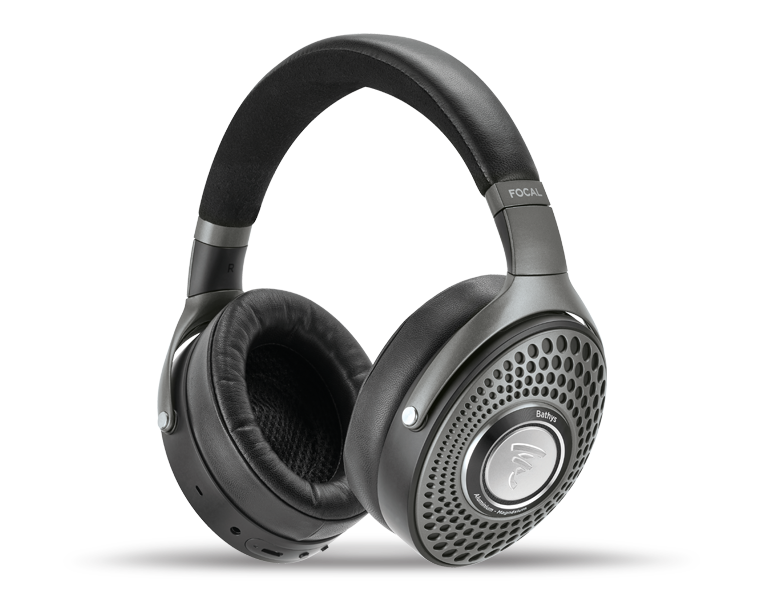
The Bathys headphones closely resemble Focal’s high-end passive over-ear models, such as the Celestee and the Utopia headphones, but they’re clearly very different. Those passive Focals scream luxury, with super-blingy designs executed mostly in metal. While the core of the headband and the yokes that support the earpieces are made from metal, the earpieces are made mostly from plastic. I was going to say the brand is aiming for a more understated look appropriate for business travelers, except that the Focal “F” logo on each earpiece lights up when they’re powered on. Which is, indeed, very blingy; could you imagine if the logo on your shirt or shoes lit up? (Although if they made an Izod shirt with an illuminated alligator, I’d order one immediately.)
But as creativity-challenged audio reviewers have hunt’n’pecked since the heyday of Julian Hirsch, “The trickle-down technology from the company’s higher-end products is evident.” Like those pricier Focals, the Bathys headphones use an M-shaped driver diaphragm in each earcup, which means the driver’s cross-section is M-shaped, and that’s said to make it stiffer and less prone to distortion than a flatter diaphragm. In this model, though, the diaphragms are executed in a combination of aluminum and magnesium—more like the $899 Elegias than the Utopia and Stellia headphones, which employ ultra-stiff, ultra-light beryllium.
Now let’s talk about the electronics. The Bathys headphones include a pretty good selection of Bluetooth codecs: aptX, aptX Adaptive, SBC, and AAC. The battery is said to run for 30 hours on a charge with noise canceling and Bluetooth on, which is pretty good. There’s a USB jack that’s used for charging and as a direct digital input, so you can connect directly to a phone or computer, bypass the source’s digital-to-analog converter and the headphones’ analog-to-digital converter, and go straight into the headphones’ 24-bit/192kHz internal DAC. There’s also an old-fashioned analog input on a 1/8″ (3.5mm) jack.
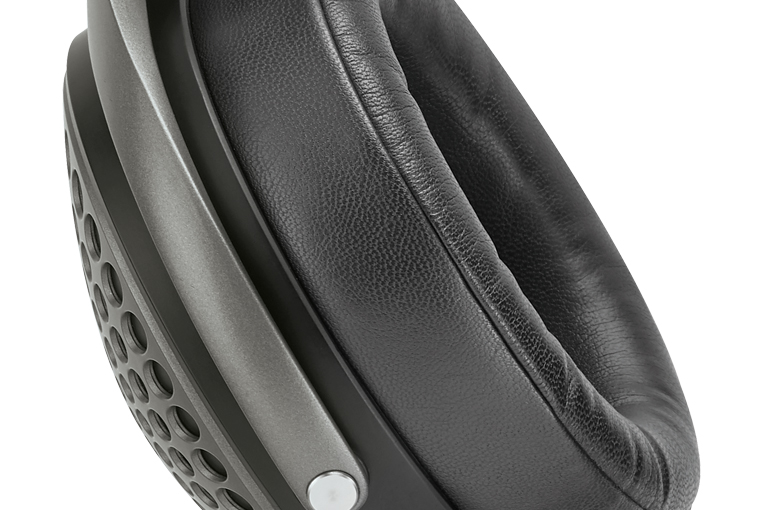
There’s also an app that lets you access a five-band EQ, control the noise-canceling modes, dim or extinguish the logo lights, see the battery’s charge status, configure Google and Amazon Alexa voice assistants, and—to my great delight!—see which audio codec you’re currently using. From now on, every headphone control app should include this feature; I’m so sick of having companies push the wonders of their latest codec while providing me no way to see if I’m actually using that codec or if I’m really just using garden-variety SBC.
For more on Focal’s philosophy on voicing headphones, check out my interview with Focal headphone product manager Mégane Montabonel.
In the box
The Bathys headphones include a lovely molded case covered in fabric; the case isn’t quite as slim as those Bose and Sony offer, but it’s close, and probably skinny enough to slip into a large laptop bag. Plus you get two 4′ (1.2m) cables: a USB-C-to-USB-C charging/DAC cable, and an analog audio cable tipped with 3.5mm plugs on each end. No 3.5mm-to-dual-mono adapter for compatibility with inflight entertainment systems from the Clinton era, and no 1/4″-to-1/8″ (6.3mm to 3.5mm) adapter for use with headphone amps—but you can get those on Amazon for less than $5 if the need arises.
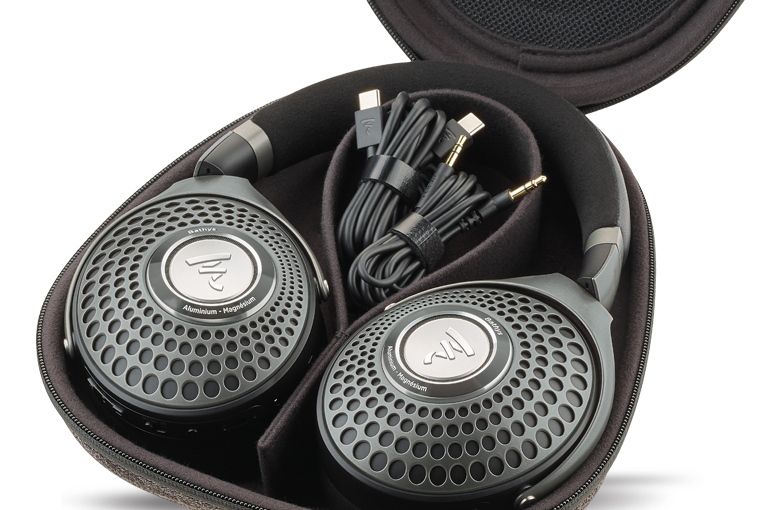
Use
I feel like I’ve said this a lot in reviews, but the Bathys headphones are among the most comfortable I’ve ever worn. The leather earpads are super-buttery, the foam has just the right mushiness, and the headphones aren’t heavy.
A button on the left earpiece turns noise canceling on or off, and selects among the three noise-canceling modes: Transparent (which lets outside sounds in), Soft (mild noise canceling), and Silent (max noise canceling). The volume buttons on the right earpiece are easy to find by feel, and the button between them handles play/pause and forward/reverse track skip. All pretty standard stuff, and easier to use than the headphones with touch-sensitive controls.
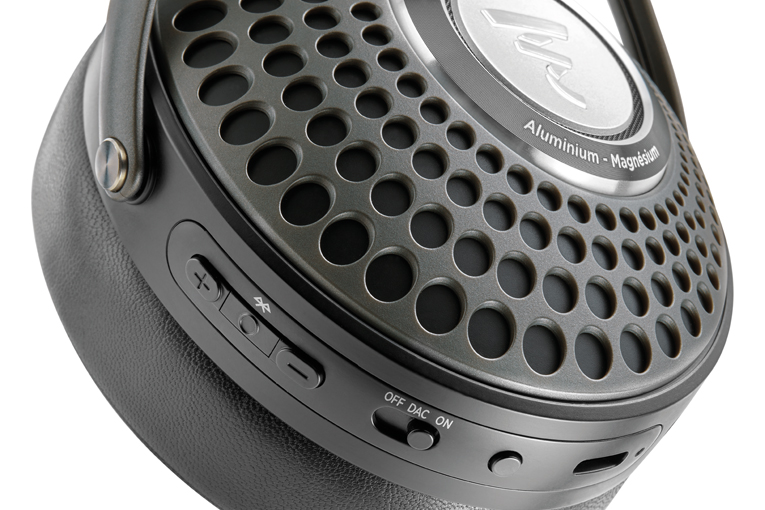
I didn’t have much chance to check out the noise canceling; it sure notched out the sound of my mini-splits, but that’s not hard. Still, it seemed pretty effective, and I felt just a slight tinge of eardrum suck, which means the noise canceling itself doesn’t suck. Check the measurements link at the top of this review for a more in-depth analysis.
Sound
When I put on a familiar track to make sure the headphones were working—Big Star’s “When My Baby’s Beside Me” (#1 Record, 320kbps Ogg Vorbis, Stax/Spotify)—the Bathys headphones’ tonal balance sounded initially bright, as if the typical 3kHz peak that shows up in headphone measurements were about 3dB higher than normal. This gave the guitars and vocals a little extra glare. However, my ears very quickly got used to it, and after another couple of tunes I couldn’t hear it. (I’d previously given the headphones ten hours of break-in.)
Just so you know, I did most of my listening with noise canceling set to Soft. Transparent actually amplifies outside sound, so that’s out, and there’s no option where you can hear just the plain amps and drivers without some sort of input from the microphones built into the headphones.
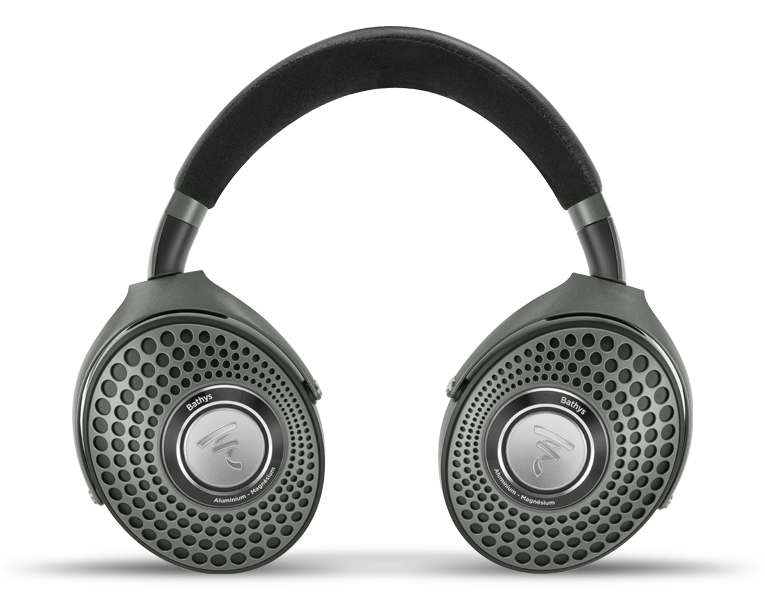
I have heard the future of jazz, and it is Makaya McCraven—a drummer and bandleader whose work is fun and funky yet harmonically deep and melodically accessible. Qobuz recently posted an exclusive live recording of McCraven’s group (International Anthem @ Public Records, 24/48 FLAC, International Anthem / Nonesuch / Qobuz), and although I’ve been following McCraven’s work for a few years, this is the recording that has made me a real fan. It’s a live recording of drums, bass guitar, a woodwinds player, a string section, and, most prominently, jazz sensation Brandee Younger on harp. (And by harp I mean the kind Chico Marx played, not a harmonica.) It’s a fantastic live recording, with lots of atmosphere and detail, but it’s mixed as cleanly and clearly as a studio recording would be. (Kudos to engineers Dave Vettraino and James Hartnett.)
OK, so I love this recording—but what’s relevant here is that the Bathys headphones seemed to pull out everything there is to hear in it. There was no lack of presence in any particular audioband, and little, if any, overemphasis (maybe a tad of extra juice in the lower treble, but we’ll see what the measurements tell us). The drums and bass held down a strong and precise groove, with no bloating in the bass that would obscure the subtleties of the bassline. The character of the various instruments was easy to hear—especially the “stringy” character of Younger’s harp, an instrument that’s not known for expression or tonal subtlety, but listening to Younger through the Bathys headphones—even in Bluetooth—felt like listening to a good classical guitar recording.
When I reviewed the Celestees, I used one of my favorite orchestral recordings, “Orgy of the Brigands,” the fourth movement of Berlioz’s Harold In Italy, featuring Rivka Golani on viola with the San Diego Symphony, Yoav Talmi conducting (16/44.1 FLAC, Naxos/Qobuz). Based on my description of the sound with the Celestees, I’d guess the Bathys headphones have a bit less bass and a bit more treble—but not to the point where I’d say this recording sounded bright. The intense, triple-forte string parts sounded clear yet not harsh or grating. But the double-bass section and percussion seemed to have a little less heft; I mentioned in that earlier review that the Celestees’ natural tonal balance made cranking them up irresistible, but I didn’t feel that way with the Bathys headphones; one or two clicks down from full-blast was fine.

The sense of left/right separation—and the acoustics of the hall—were excellent, almost like what I’d expect from good open-back headphones, although weirdly, these headphones didn’t seem to give me as strong a center image as many do. (These impressions are the result of my head-related transfer function, which is similar in all of us but still unique to each individual, so you may perceive these headphones’ imaging and soundstaging differently than I did.)
Wanting to explore that center image a little more, I put on a vocal record I’ve loved for decades: John Coltrane and Johnny Hartman (24/96 FLAC, Impulse/Qobuz). On “Autumn Serenade,” I could definitely hear some lower-to-mid-treble emphasis, which brought out the brushed snare drum and the cymbals, made Coltrane’s tenor sax sound a little brighter, gave Hartman a bit of nasality, and again amped up the left-minus-right (i.e., ambience) elements of the recording. Hartman still seemed centered, but I realized that bit of extra treble pumping up the ambience was probably what made me hear “Orgy of the Brigands” as a little less center-heavy than usual. From a tonal standpoint, I was reminded of what I’ve heard from the “bright but not too bright” Grado and HiFiMan headphones I’ve reviewed, but maybe dialed down 1 or 2dB from that.
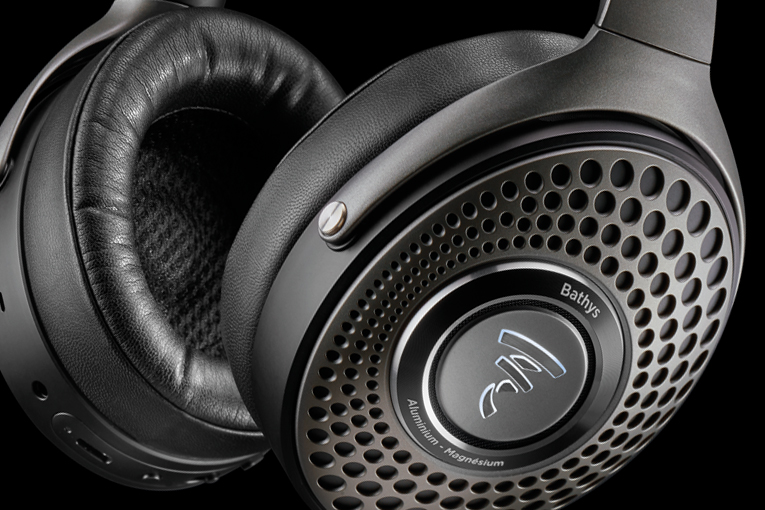
I wondered whether I’d hear a big difference when I switched to the direct DAC input, and then to the analog input (which, it appears, goes through an analog-to-digital and digital-to-analog chain). On “Trouble Is a Man” from Patricia Barber’s Clique (24/176.4 FLAC, Impex/Qobuz), the only difference I could hear between Bluetooth (in this case, aptX) and the direct DAC connection was a little bit of extra detail in the percussion and a more detailed sense of the room reverb with the latter. There was no tonal-balance difference; that subtle tilt toward the treble and away from the bass remained. When I switched to the analog cable from the DAC connection, I couldn’t hear a difference except that the max volume on the analog input was several dB lower.
Comparisons
All I had on hand that made sense to compare with the Bathys headphones were the Beyerdynamic T5 (3rd Generation) headphones ($999), one of my favorite closed-back models, and the Edifier Stax Spirit S3s ($399.99), which are closed-back Bluetooth headphones with planar-magnetic drivers and no noise canceling. I drove the Beyerdynamics and the Edifiers straight from an EarMen Eagle DAC-headphone amp, while I used the DAC input of the Focals.
Sticking with the same Patricia Barber album, but switching to “I Could Have Danced All Night” . . . well, for the Bathys ’phones, just see the description a couple of paragraphs above. I noticed that the T5s had a mildly fuller sound in general, with more lower and upper bass. So the Beyerdynamics are more Harman curve, while the Focals are more HiFiMan-ish. The T5s also had a somewhat more seamless soundstage; I got a more solid center image of Barber’s voice and the nylon-string guitar solo.
When I switched to Silk Sonic’s “Fly As Me” (An Evening with Silk Sonic, 24/44.1 FLAC, Aftermath/Atlantic/Qobuz), the T5s perfectly captured the tune’s hard, old-school funk groove while spreading the voices, handclaps, and horns across a broad soundstage. In contrast, the Bathys headphones sounded a little less spacious, didn’t have that fat bottom end, and also made Bruno Mars’s rap sound a little bright.
On “Fly As Me,” the Edifiers kinda split the difference between the T5s and the Bathys, with more deep bass than the Focals could muster and a slightly brighter sound than the Beyerdynamics. The Edifiers’ extra bit of bass came in handy on Patricia Barber’s “I Could Have Danced All Night,” which gave the presentation a little more heft to balance out the other instruments, but I think many audiophiles would prefer that extra bit of treble the Focals deliver.
Conclusion
The Focal Bathys headphones deliver something that I think some audiophiles have wanted—a high-quality product with a tonal balance that’s tilted a bit more toward their taste and doesn’t cater as much to mass-market music fans the way a Bose or Sony might. These headphones are comfortable, don’t have any ergonomic glitches, and are compact enough for easy travel, making them one of the best options, and possibly the best option, in the growing high-end noise-canceling headphone market. But of course, I haven’t heard them all.
. . . Brent Butterworth
Associated Equipment
- Smartphone: Samsung Galaxy S10.
- DAC-headphone amp: EarMen Eagle.
Focal Bathys Bluetooth Noise-Canceling Headphones
Price: $799.
Warranty: Three years, parts and labor.
Focal
BP 374, 108 rue de l’avenir
42353 La Talaudière Cedex
France
Phone: (+33) 4-77-43-57-00
Focal Naim America
313 Rue Marion
Repentigny, QC J5Z 4W8
Canada
Phone: (800) 663-9352
Website: www.focal.com





